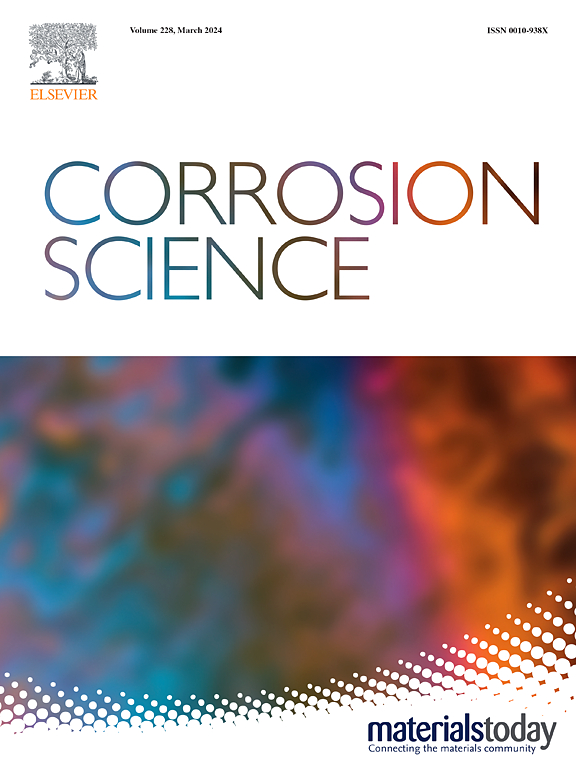Experimental and crystal plasticity study on hydrogen-assisted fatigue crack growth behavior of IN625 superalloy
IF 7.4
1区 材料科学
Q1 MATERIALS SCIENCE, MULTIDISCIPLINARY
引用次数: 0
Abstract
The fatigue crack growth (FCG) behavior of IN625 alloy was studied by experimental methods and crystal plasticity simulations. Based on the experimental FCG rate curves, it is evident that hydrogen significantly accelerates FCG, and calculations show that this acceleration factor reaches a maximum of 2.41 times at 1 Hz. Hydrogen results in smaller plastic deformation zones compared to hydrogen-free samples. The interaction between hydrogen and dislocations leads to the nucleation of micro-voids along the slip planes, promoting the hydrogen-assisted cracking process. Lower loading frequencies results in finer fatigue striations and more pronounced hydrogen embrittlement features on the fracture surface.
IN625 超合金氢辅助疲劳裂纹生长行为的实验和晶体塑性研究
通过实验方法和晶体塑性模拟研究了 IN625 合金的疲劳裂纹生长(FCG)行为。根据实验的 FCG 速率曲线,氢明显加速了 FCG,计算表明,在 1 Hz 时,该加速因子达到最大值 2.41 倍。与无氢样品相比,氢导致的塑性变形区更小。氢与位错之间的相互作用导致沿滑移面的微空洞成核,促进了氢辅助开裂过程。加载频率越低,疲劳条纹越细,断裂表面的氢脆特征越明显。
本文章由计算机程序翻译,如有差异,请以英文原文为准。
求助全文
约1分钟内获得全文
求助全文
来源期刊

Corrosion Science
工程技术-材料科学:综合
CiteScore
13.60
自引率
18.10%
发文量
763
审稿时长
46 days
期刊介绍:
Corrosion occurrence and its practical control encompass a vast array of scientific knowledge. Corrosion Science endeavors to serve as the conduit for the exchange of ideas, developments, and research across all facets of this field, encompassing both metallic and non-metallic corrosion. The scope of this international journal is broad and inclusive. Published papers span from highly theoretical inquiries to essentially practical applications, covering diverse areas such as high-temperature oxidation, passivity, anodic oxidation, biochemical corrosion, stress corrosion cracking, and corrosion control mechanisms and methodologies.
This journal publishes original papers and critical reviews across the spectrum of pure and applied corrosion, material degradation, and surface science and engineering. It serves as a crucial link connecting metallurgists, materials scientists, and researchers investigating corrosion and degradation phenomena. Join us in advancing knowledge and understanding in the vital field of corrosion science.
 求助内容:
求助内容: 应助结果提醒方式:
应助结果提醒方式:


